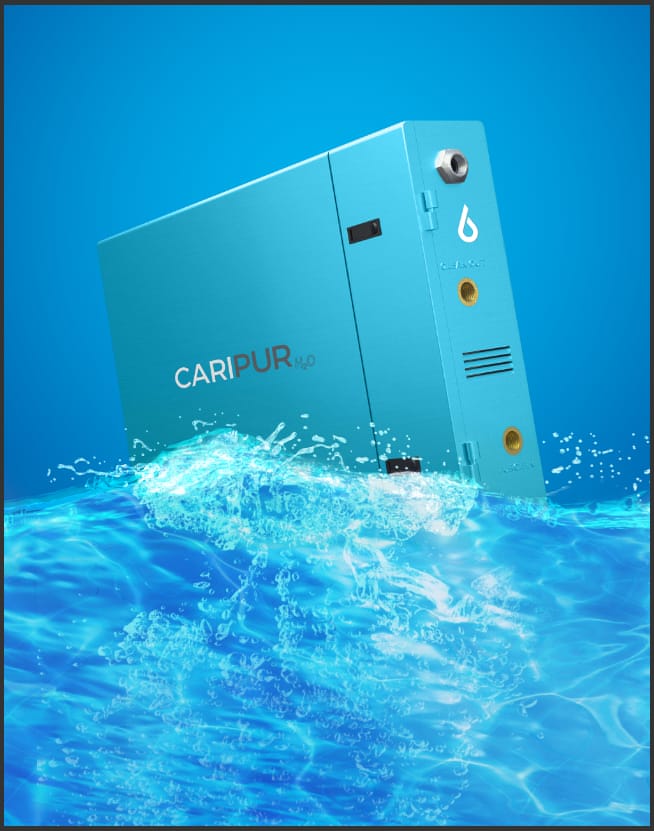Water, Water, Everywhere and Now a Drop to Drink

The U.S. Virgin Islands (USVI) are a small grouping of islands in the Caribbean (roughly 1/8th the size of Rhode Island).
Water is everywhere; the islands are surrounded by the Atlantic Ocean and receive 42 inches in annual rainfall. And yet, potable drinking water is not available to everyone. Limited public water infrastructure and contaminated cistern tanks lead to excessive bottled water purchases and plastic pollution.
Installing effective water purification systems, such as the Caripur H2O system, can help resolve the USVI’s current water crisis.
USVI’s Limited Public Water Access
Desalination Plants
The Water and Power Authority (WAPA) generates potable public water in 2 of the 4 islands. Through reverse osmosis, the desalination plants turn ocean water into drinking water. Although the plants are relatively new, the infrastructure leaves much to desire; old leaky pipes result in revenue loss and potential health concerns.
Only 25% of the island has access to WAPA infrastructure. Some residents obtain WAPA water delivered through a third-party service, but this is typically used only as a backup method to their primary water source: rainwater.
Cistern Tanks
Every building on the USVI is required to have a rain catchment system. The precipitation collects on the roof, drains into a cistern tank, and is routed into the house for showering, washing clothes, and flushing toilets. However, it is not a primary source of drinking water. Only 18% of residents use cistern water for drinking, cooking, or brushing their teeth (keep in mind, there are currently 60,000 cisterns in use).
Cistern rainwater is not advised for consumption. A study from the Centers for Disease Control and Prevention (CDC) and USVI Department of Health found that Escherichia coli was present in 80% of cisterns and 50% of water faucets. These data revealed that a majority of cistern tanks are contaminated, but they also demonstrate the importance of proper water filtration systems between the cistern and faucet.
Combating Cistern Contamination
Rainwater picks up any particles in its path, including pathogens from bird droppings and animal carcasses. This is how cistern tanks become easily contaminated with germs and viruses.
Chlorine can be added into cistern tanks to disinfect the water; however, this may cause other problems. Organic materials in surface water mixed with chlorine can create disinfectant byproducts (DBPs), which may result in harmful health effects (the CDC states that more research is needed to understand the long-term impacts of DBPs).
With limited access to potable water, many residents rely on bottled water to supplement their consumption needs, but these efforts are costly (an average of $100 per month). The USVI lack adequate recycling programs and are unable to properly handle the plastic bottle waste.
Filtration Technology
The Caripur H2O system processes cistern rainwater and generates purified drinking water that is colorless and odorless. The filters are so small that even viruses cannot pass through, let alone heavy metals, parasites, or chlorine particles.
By incorporating safe and effective purifying technology, USVI residents can reduce their reliance on bottled water and change their relationship with cistern water. These efforts can lead to monthly savings in water costs for families while reducing plastic pollution on the islands.
Most importantly, residents will be able to access clean drinking water in their own homes.